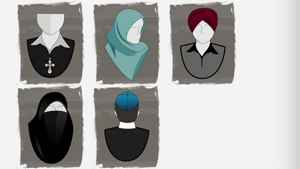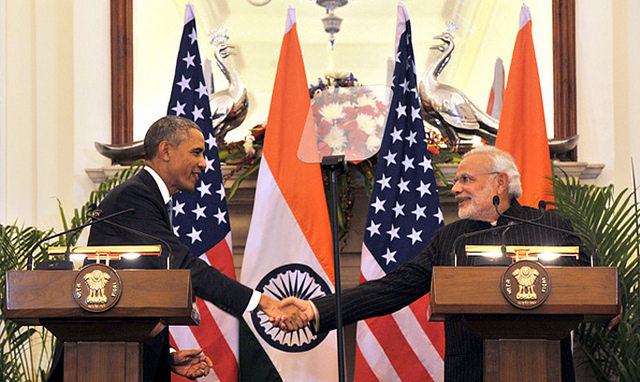French speaking nations of the world are leading the way in enforcing secularism. In 2011, national laws banning the wearing of full-face veils in public came into force in France and Belgium. Legitimate concerns associated with this form of religious dress such as public safety, public health, facial identification and the rights and freedoms of others are cited as justification for such a limitation on religious freedom. However, critics argue that the French and Belgian laws are specifically directed against the coverings worn by Muslim women and thus raise discrimination concerns. Regardless, the governments of both nations continue to legislate according to a strict interpretation of secularism, with the goal of purging religion from the public sphere.
In late August, the French government announced its intention to place a “secularism charter” in every school by the end of September. Mimicking its elder brother’s policy of laicité, the Quebec government recently began discussing its own Charter of Quebec Values. With the outline of the charter now public, it is clear that an article will ban religious dress and symbols from public institutions. The crucifix hanging in the legislative assembly, a gift from the Catholic Church in 1936, will remain, however. How can Quebec justify something so seemingly contradictory, one may ask? Understanding Quebec’s approach to religion necessitates a look at the history of the province.
Prior to Confederation, the French population of Canada fought to acquire the right to practice Catholicism. It was granted and protected in the Quebec Act of 1774. However, as western political systems became increasingly secularized, Quebec followed with the Quiet Revolution. It adopted the French post-Enlightenment approach to secularism, controlling religion in the public sphere. The rest of Canada adopted the English model, which emphasizes managing diversity and thereby allowing a degree of multiculturalism. That is why a crucifix will remain above the Speaker’s chair in the Quebec legislature as a “cultural symbol.” It represents the tension between state neutrality and respect for Quebec’s Catholic origins and its status as a key pillar of Quebec’s national identity.
At the federal level, a political debate has ignited. Charges that domineering federalism threatens French Canadian cultural identity are met with accusations that the Charter is discriminatory and thus contrary to Canadian liberal values.
[captionpix align=”right” theme=”elegant” width=”300″ imgsrc=”http://www.cbc.ca/gfx/images/news/topstories/2013/09/10/metroad1-300.jpg” captiontext=”Ad promoting the Charter (Sean Henry/CBC)”]
It would be crass to allege that the Quebec Charter debate has assumed an international dimension. However, the root cause of the Canadian debate, the friction between the two versions of secularism, certainly has. Adding to the complaints of numerous international human rights bodies, the US Commission on International Religious Freedom (USCIRF) recently released a report criticizing several Western European countries, including France and Belgium, of excessively aggressive laicité policies. Evidently, the differing approaches to secularism bring attention to the divisions within and among nations.
Whether or not the divisions within Canada intensify depends on how the Charter is received in Quebec. Polls suggest that the Charter has the support of the majority of public opinion in Quebec. However, it is unlikely that it will pass. Even if the Charter is accepted in the Quebec legislature and Premier Marois uses the notwithstanding clause in the Charter of Rights and Freedoms to get around a Supreme Court defeat, the Quebec government would still have to justify a violation of the Quebec Charter of Rights and Freedoms which also protects religious freedom.
Prime Minister Stephen Harper, though reluctant to enter the debate, has warned that the federal government will monitor the plans for the Charter to ensure that it protects minority rights. However, Prime Minister Harper cannot remain cautious for much longer. How the federal government chooses to respond once the legislation is tabled and how it acts on the outcome will be critical in determining the extent to which the divide between English and French Canada deepens.




